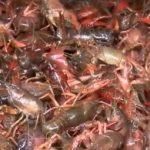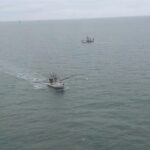Tag Archives: Vietnam
Louisiana: Rep. Higgins asks President Trump for seafood tariff
 Rep. Clay Higgins (R-LA) has delivered an official letter to President Trump, requesting tariffs and increased trade enforcement on seafood imports. Countries specifically mentioned in the letter include China, Ecuador, India, Indonesia, and Vietnam, which Higgins says are hampering domestic shrimpers, fishermen, and crawfish producers. He says foreign seafood industries are heavily subsidized and engage in illegal dumping into the United States, artificially driving down prices and disrupting fair market conditions. You can read the letter in full below. more, >>CLICK TO READ<<14:53
Rep. Clay Higgins (R-LA) has delivered an official letter to President Trump, requesting tariffs and increased trade enforcement on seafood imports. Countries specifically mentioned in the letter include China, Ecuador, India, Indonesia, and Vietnam, which Higgins says are hampering domestic shrimpers, fishermen, and crawfish producers. He says foreign seafood industries are heavily subsidized and engage in illegal dumping into the United States, artificially driving down prices and disrupting fair market conditions. You can read the letter in full below. more, >>CLICK TO READ<<14:53
South Carolina shrimpers applaud decision to impose duties on shrimp imported from four countries
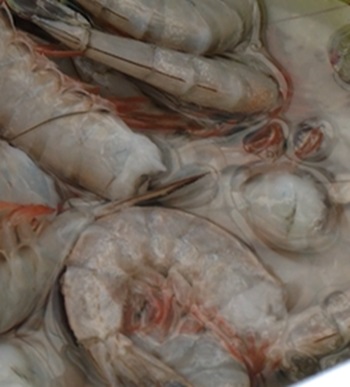 South Carolina shrimpers are celebrating the U.S. International Trade Commission’s recent decision to crack down on frozen shrimp imports from four countries. The ITC voted in favor of issuing countervailing duties on frozen, warm-water shrimp imports from Ecuador, India, and Vietnam after the U.S. Department of Commerce determined those governments were illegally subsidizing the industry. “We’re grateful because it’s an acknowledgment of what we feel and we experience in the industry and we see on a daily basis,” said Bryan Jones, a first-generation shrimper who lives in McClellanville. Jones serves as vice president of the South Carolina Shrimpers Association and was among a group of commercial fishermen who testified before the ITC in Washington, D.C. in October. more, >>CLICK TO READ<< 14:20
South Carolina shrimpers are celebrating the U.S. International Trade Commission’s recent decision to crack down on frozen shrimp imports from four countries. The ITC voted in favor of issuing countervailing duties on frozen, warm-water shrimp imports from Ecuador, India, and Vietnam after the U.S. Department of Commerce determined those governments were illegally subsidizing the industry. “We’re grateful because it’s an acknowledgment of what we feel and we experience in the industry and we see on a daily basis,” said Bryan Jones, a first-generation shrimper who lives in McClellanville. Jones serves as vice president of the South Carolina Shrimpers Association and was among a group of commercial fishermen who testified before the ITC in Washington, D.C. in October. more, >>CLICK TO READ<< 14:20
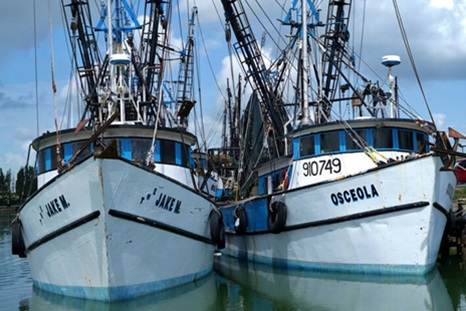
Struggling Valley shrimpers receive good news on new import measures
In an industry where bad news is the norm, shrimpers in Texas and elsewhere in the United States finally have a sliver of good news. The U.S. International Trade Commission, or ITC, on Tuesday determined that the U.S. shrimp industry is being “materially injured” by imports of frozen warm-water shrimp from Indonesia that the U.S. Department of Commerce says are being sold in this country at less than fair value, and also by shrimp imports from Ecuador, India and Vietnam that the Commerce Department says are being subsidized by the governments of those countries. As a result of the ITC’s determinations, the Commerce Department will issue “countervailing duty orders on imports of this product from Ecuador, India and Vietnam and an anti-dumping duty order on imports of this product from Indonesia,” the ITC announced Tuesday. more, >>CLICK TO READ<< 11:57
U.S. International Trade Commission votes in favor of antidumping, countervailing duties on shrimp imports
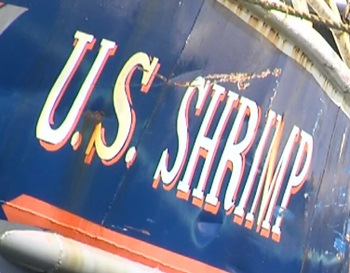 Southeast Texas fishermen are celebrating a win after the U.S. International Trade Commission voted in favor of antidumping and countervailing duties on shrimp imports from four countries. On Wednesday morning, the U.S. International Trade Commission voted in favor of antidumping and countervailing duty petitions filed by the American Shrimp Processors Association against imports of frozen warm-water shrimp from Ecuador, India, Indonesia, and Vietnam. As a result of the commission’s vote, duties ranging from 2.84% to 221.82% will be imposed on imports of shrimp from the four countries. “We are thrilled with the outcome of today’s vote,” said Trey Pearson, president of ASPA. more, >>CLICK TO READ<< 13:19
Southeast Texas fishermen are celebrating a win after the U.S. International Trade Commission voted in favor of antidumping and countervailing duties on shrimp imports from four countries. On Wednesday morning, the U.S. International Trade Commission voted in favor of antidumping and countervailing duty petitions filed by the American Shrimp Processors Association against imports of frozen warm-water shrimp from Ecuador, India, Indonesia, and Vietnam. As a result of the commission’s vote, duties ranging from 2.84% to 221.82% will be imposed on imports of shrimp from the four countries. “We are thrilled with the outcome of today’s vote,” said Trey Pearson, president of ASPA. more, >>CLICK TO READ<< 13:19
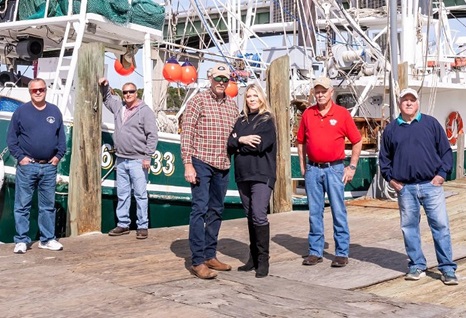
Coastal Georgia Shrimping: A new season of uncertainty, possibilities and hope
In a word, “difficult,” said Dee Kicklighter of their most recent shrimping season. Kicklighter, who has worked with Mathews for about eight years, has seen first-hand how the unpredictability of the business can be costly. “You plan for something to be one price, and then the next week you come back, and it could be potentially thousands of dollars more, depending on what you’re dealing with,” he said of fluctuating prices, including fuel. Over the years, Mathews said the ever-changing cost of fuel has taken a toll on the number of shrimpers in the industry. It’s not just Georgia shrimpers contending with the negative effects from imports. North Carolina, Texas, Louisiana, Florida and other coastal states are also feeling the friction of narrowing profit margins that threaten their way of life. Photos, more, >>click to read<< 09:15
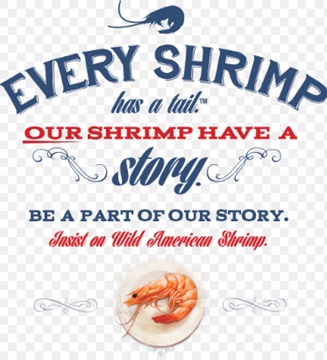
American Shrimp Processors Association Launches Trade Petitions Addressing Unfair Dumping and Illegal Subsidies
Today, the American Shrimp Processors Association (ASPA) filed trade petitions seeking antidumping duties on imported frozen warmwater shrimp from Ecuador and Indonesia and countervailing duties on imported shrimp from Ecuador, India, Indonesia, and Vietnam. The U.S. shrimp market has been overwhelmed by massive quantities of underpriced shrimp imports, resulting in unsustainably low dockside prices, falling domestic market share, significantly lower profit margins, and historically high inventory levels. >>click to read<< 07:56

U.S. Shrimp Industry and Congressional Allies Urge ITC to Maintain Antidumping Orders on Imported Shrimp
The United States shrimp industry recently made its case to maintain antidumping orders on imported shrimp from India, Thailand, and Vietnam before the International Trade Commission (ITC). On April 11, 2023, the ITC conducted a hearing in connection with its Third Sunset Review on the antidumping orders. The American Shrimp Processors Association (ASPA) presented five witnesses from shrimp processors in Texas, Louisiana, Mississippi, and Florida who relayed stories about the continuing injury caused by ever- increasing volumes of dumped imported shrimp. >click to read< 13:58

Cassidy Urges International Trade Commission to Keep Antidumping Orders on Shrimp from China, India, Thailand, Vietnam
U.S. Senator Bill Cassidy M.D. (R-LA) expressed his support for continuing antidumping orders on imports of frozen warmwater shrimp imported from China, India, Thailand, and Vietnam in a letter to U.S. International Trade Commission Chairman David Johanson. Cassidy highlighted the importance of these antidumping orders to ensure Louisiana’s shrimp industry can compete on a level playing field. “Dumped imports from China, India, Thailand, and Vietnam surged into the U.S. market, driving down prices, depressing earnings, and making it increasingly difficult to cover the costs of production. Faced with declining revenues and market share, many small fishermen, processors, and distributors were forced to close. The orders have imposed needed discipline on imports and allowed our vital Louisiana shrimp industry to survive,” wrote Dr. Cassidy. >click to read< 14:40
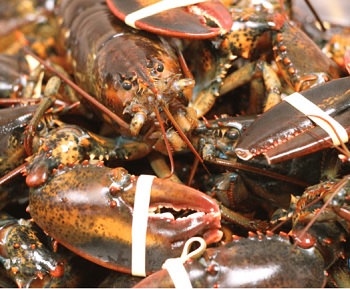
Vietnamese favor Canadian lobsters, snow crabs
Vietnam spent US$65 million importing Canadian seafood, mainly lobsters and snow cabs last year, doubling 2021 imports and trebling 2020. Among Southeast Asian countries, Vietnam was Canadian’s biggest seafood importer, Steve Craig, Minister of the Department of Fisheries and Aquaculture of the Canadian province of Nova Scotia, said at a recent business networking event in HCMC. Although Vietnam is the world’s fourth largest seafood exporter with an annual turnover of $11 billion, it is still a fertile ground for Canadian products, he said, noting that Vietnamese are among the world’s top seafood consumers. >click to read< 11:47
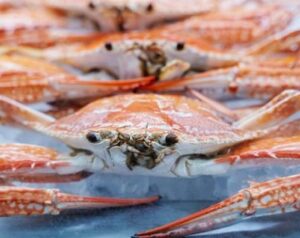
Australian Seafood industry on ice
A great Australian tradition is seafood at Christmas time. We have some of the best fresh seafood in the world. The need for the reminder is becoming more important. Over the past few decades Australia has closed massive amounts of oceans and rivers reducing the amount of seafood available to all Australians. The result of all these fishing bans has not been to save the environment, we have instead just imported seafood from other countries with poorer environmental practices. We instead import most of our seafood from China, Thailand and Vietnam who all extract fish from their oceans much more intensively than we do. The numbers are shocking. >click to read< 08:04
Shadow markets mask the size of China’s demand for lobster
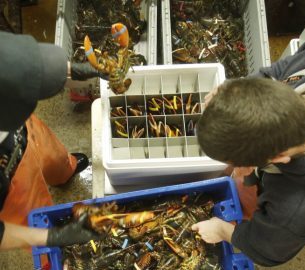 The Chinese appetite for North American lobster is well known and getting bigger every year, but it may be twice as big as previously believed. That’s because there is a lot more lobster ending up on Chinese dinner plates than what Canada and the U.S. send over. Researchers think there is even more North American lobster being traded along indirect and sometimes shadowy routes through other places in Asia, like Hong Kong and Vietnam, that eventually ends up as luxury eats for China’s growing middle class. click here to read the story 09:54
The Chinese appetite for North American lobster is well known and getting bigger every year, but it may be twice as big as previously believed. That’s because there is a lot more lobster ending up on Chinese dinner plates than what Canada and the U.S. send over. Researchers think there is even more North American lobster being traded along indirect and sometimes shadowy routes through other places in Asia, like Hong Kong and Vietnam, that eventually ends up as luxury eats for China’s growing middle class. click here to read the story 09:54
Using Intimidation, China tries to create new fishing areas on the East Sea
 VietNamNet Bridge – Colonel Le Thanh Van said China was trying to create new fishing areas in the East Sea (South China Sea). Specifically, China strengthened military activities such as training, reconnaissance patrols and maneuvers at sea to show of force, intimidate and deter the countries involved in maritime disputes with China. China increased surveillance patrols to support its marine exploitation activities, including pursuing, using water cannons, demolishing, seizing fishing equipment, and even beating Vietnamese fishermen in an attempt to prevent them from going out to sea for fishing. Read the article here 17:38
VietNamNet Bridge – Colonel Le Thanh Van said China was trying to create new fishing areas in the East Sea (South China Sea). Specifically, China strengthened military activities such as training, reconnaissance patrols and maneuvers at sea to show of force, intimidate and deter the countries involved in maritime disputes with China. China increased surveillance patrols to support its marine exploitation activities, including pursuing, using water cannons, demolishing, seizing fishing equipment, and even beating Vietnamese fishermen in an attempt to prevent them from going out to sea for fishing. Read the article here 17:38
US: Chinese Island Building Threatens Shipping, Fishing
 China’s aggressive island building in the South China Sea has drawn international attention to Beijing’s expansive maritime territorial claims. This week it also drew a caution from the head of the United States Pacific Fleet, Admiral Scott Swift. In a speech at a Cooperative Strategy Forum in Hawaii Monday, Admiral Swift did not name China as the country responsible for the situation. But he said the way claims have been enforced has intimidated fishermen who “trawled the seas freely for generations” and are now facing threats to their livelihoods. Read the article here 08:59
China’s aggressive island building in the South China Sea has drawn international attention to Beijing’s expansive maritime territorial claims. This week it also drew a caution from the head of the United States Pacific Fleet, Admiral Scott Swift. In a speech at a Cooperative Strategy Forum in Hawaii Monday, Admiral Swift did not name China as the country responsible for the situation. But he said the way claims have been enforced has intimidated fishermen who “trawled the seas freely for generations” and are now facing threats to their livelihoods. Read the article here 08:59
China Will Solve Maritime Disputes Through Direct Talks – remember the Geoduck ban ?

VIET NAM Shrimp sector fights US shrimpers’ accusations
US shrimp producers filed a petition asking the US Department of Commerce to run an anti-subsidy investigation into frozen warm-water shrimp imported from Vietnam, Thailand and other prominent shrimp farming countries. The US producers also requested that the US International Trade Commission review losses caused to the domestic shrimping sector as a result of cheaper imports. Read more












































